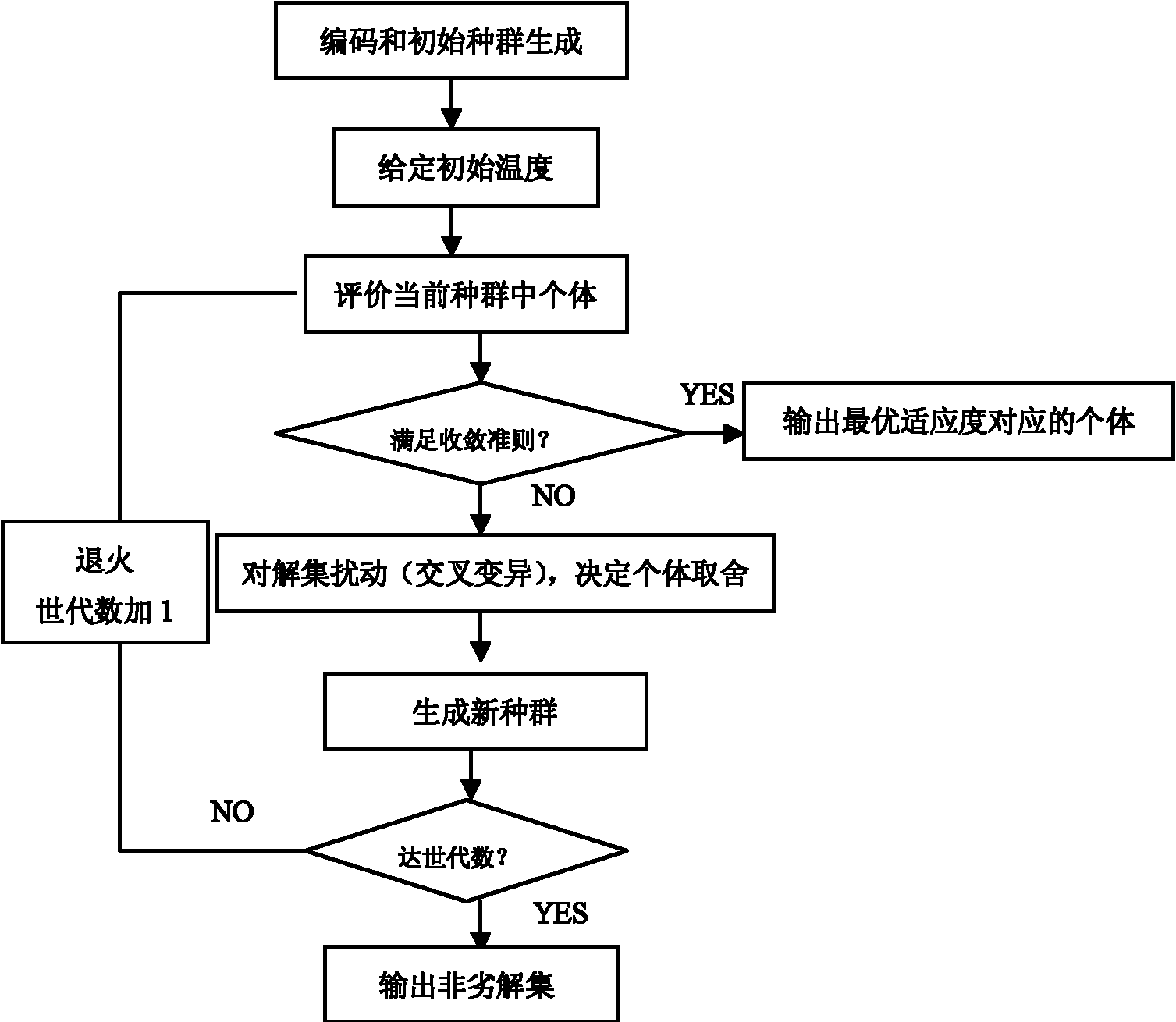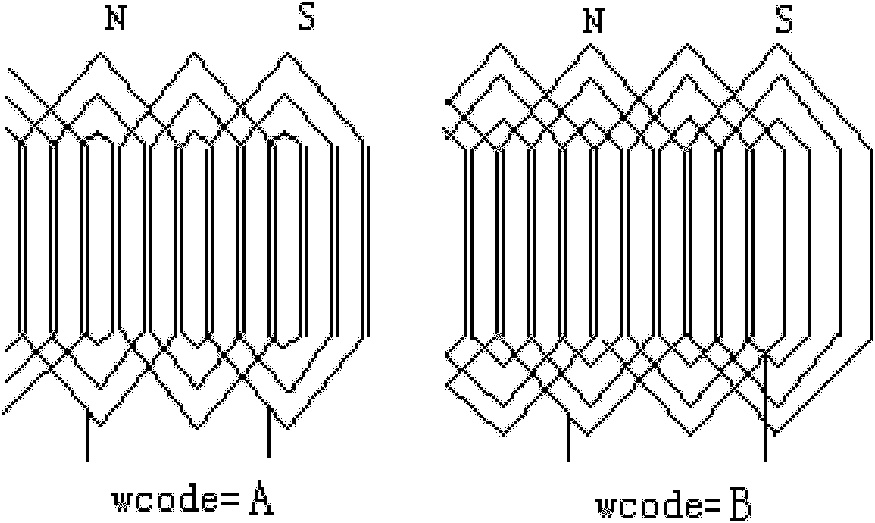Method for designing single-phase asynchronous machine based on multi-target hybrid simulated annealing algorithm
A single-phase asynchronous motor, hybrid analog technology, applied in computing, electrical digital data processing, special data processing applications, etc., can solve the problems of low design efficiency and time-consuming
- Summary
- Abstract
- Description
- Claims
- Application Information
AI Technical Summary
Problems solved by technology
Method used
Image
Examples
Embodiment 1
[0061] refer to figure 1
[0062] A design method for a single-phase asynchronous motor based on a multi-objective hybrid simulated annealing algorithm, including the following steps:
[0063] 1) Determine n variables X to be optimized 1 , X 2 ,...,X i ,...,X n , respectively set the value range of each variable; randomly generate m variable values X within the value range of each variable i ={x i1 , x i2 ,...,x ii ,...x im}, where X i is the ith variable, x ii for variable X i The i-th variable value of ; a variable value of each variable is used as an element to form a variable group Q with n elements j ={x 1j , x 2j ,...,x ij ,...x mj},x ij It is the jth variable value of the i variable; m variable values form a variable population, and m is set manually; all the values in the variable group are binary coded, and the variable group is converted into a chromosome, and a binary code is called a chromosome an individual in
[0064] If the variables to ...
Embodiment 2
[0116] refer to Figure 2-9
[0117] Step 1: Input the rated parameters of the motor: motor model, operation mode, output power, frequency, phase voltage, etc., such as Image 6 shown.
[0118] Step 2: Input the basic parameters of the stator and the fixed parameters in the slot size, such as Figure 7 As shown, the rest of the uninput parameters are the variables to be optimized.
[0119] Step 3: Input the basic parameters of the rotor, the rotor end ring, and the fixed parameters in the rotor groove shape, such as Figure 8 As shown, the rest of the uninput parameters are the variables to be optimized.
[0120] Step 4: Input the parameters of the optimization algorithm: population size, maximum generation number, annealing initial temperature, random seed, and various target values: efficiency target value, power factor target value, starting torque multiple target value, maximum torque Multiple target value, starting current multiple target value, cost target value, su...
PUM
 Login to View More
Login to View More Abstract
Description
Claims
Application Information
 Login to View More
Login to View More - R&D
- Intellectual Property
- Life Sciences
- Materials
- Tech Scout
- Unparalleled Data Quality
- Higher Quality Content
- 60% Fewer Hallucinations
Browse by: Latest US Patents, China's latest patents, Technical Efficacy Thesaurus, Application Domain, Technology Topic, Popular Technical Reports.
© 2025 PatSnap. All rights reserved.Legal|Privacy policy|Modern Slavery Act Transparency Statement|Sitemap|About US| Contact US: help@patsnap.com



